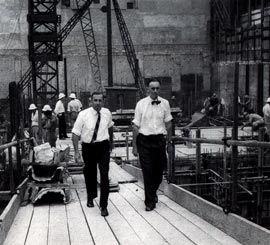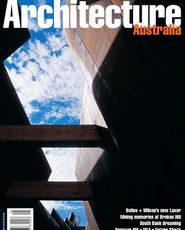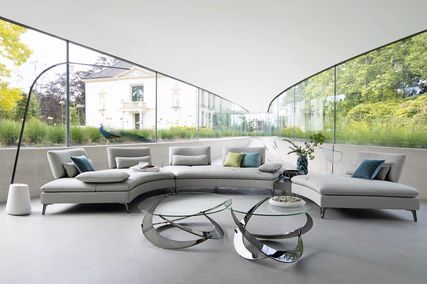

My earliest memories are of scratchy bushes, native flowers, snakes, rocky outcrops, rock pools, eucalypts in the wind and black-rimmed oysters around mud flats. Living on the northern-most edge of the Sydney plateau, I found the city a strange and unfamiliar place. Contouring down trackless hillsides with crackling branches under foot and angophoras overhead, judging slippery surfaces and balancing on ledges, was first nature to me. Before long, my sense of bush direction usurped the compass.
First encounters with the city came at age five. I was not prepared. Peering for the first time out of the car, mid-span on the mammoth Harbour Bridge, was so frightening that I hid behind the front seats until I was assured that it had passed. The bridge was the gateway to a chaotic and marvelous place.
Grounded in the DIY culture of the Australian suburbs, we had every piece of equipment needed to build a nuclear submarine in our garage. If the car broke down, you fixed it, if the house needed more room, you built it. I could spot a Witworth, BSF or standard gauge thread 15 years before I could identify a building style.
It was chance and circumstance that brought me to study architecture. My father’s catalogues and technical books – hidden under the telephone cabinet – about carpentry and building your dream home made an early impression. Apparently homes contained dreams, and architecture was found in buildings I had never seen. I found that discovery of the unfamiliar fuels desire.
Chance encounters led me to work for Harry Seidler and Glenn Murcutt during my studies. Although we were exposed to Vitruvius, Michaelangelo and Borromini, I needed to know more about the city missing from my childhood. I had no idea who designed the General Post Office, the Burns Philp Building or St Mary’s Cathedral. So I made a project out of visiting buildings and writing my first architectural guidebook. To cover the cost of photography and printing I approached the Royal Australian Institute of Architects, an organisation I had heard about, but never been to. I was a novice and nervous, but I put my proposition for funding to undertake research, and they said yes! In 1979 two guidebooks were published. It created for me a state of “preparation” and confidence, tapped years later when I was invited in London to write guides on the Islamic architecture of Cairo and the modernism of Jerusalem for International Architect. That sense of extending faith to a student has lived with me ever since.
First experiences leave lasting impressions. Students of architecture must travel and discover for themselves the cities they have only read about. By traveling, thinking, writing and sketching, they maintain their state of “preparation”, an ability to respond to the familiar and the strange. Chance encounters and circumstance will play a pivotal role in each individual’s story.
Architecture is an ever-expanding space, and the city is its main project. Rules are created to shape outcomes, but they often fail to work. A number of young graduates will end up making rules and others will end up breaking them. It is wrong to apply regulation to the aesthetic nature of buildings, just as it is with music, fashion or art. Society learns its values through waves – coming together and breaking apart – eroding and reforming a cultural landscape. In a dynamic society we have to cope with culture and a counter-culture at play – one conservative, the other breaking boundaries – and this is a vital and a living thing.
The waves washing through our culture do raise questions. Our mental mainframe is questioning and searching for character-defining symbols, myths and beliefs that could be absorbed cross-culturally.
Heritage, a concept once railled against in working class suburbs, has been grasped as an antidote against change, almost any change, good or bad. Yet reconstruction, renovation and replacement will escalate in comparison to our generation’s sweep of the newly built. In all this, the cost of resources and human effort will place great importance on design as a maturing society demands its own distinction.
In Soft City, Jonathon Raban muses, “We shall need more daring, more cool understanding than we are displaying at present. We live in cities badly; we have built them up in culpable innocence and now fret helplessly in a synthetic wilderness of our own construction. We need – more urgently than architectural utopias, ingenious traffic systems, or ecological programmes – to comprehend the nature of citizenship, to make a serious imaginative assessment of that special relationship between the self and the city; its unique plasticity, its privacy and freedom.”
Graham Jahn FRAIA
National President















